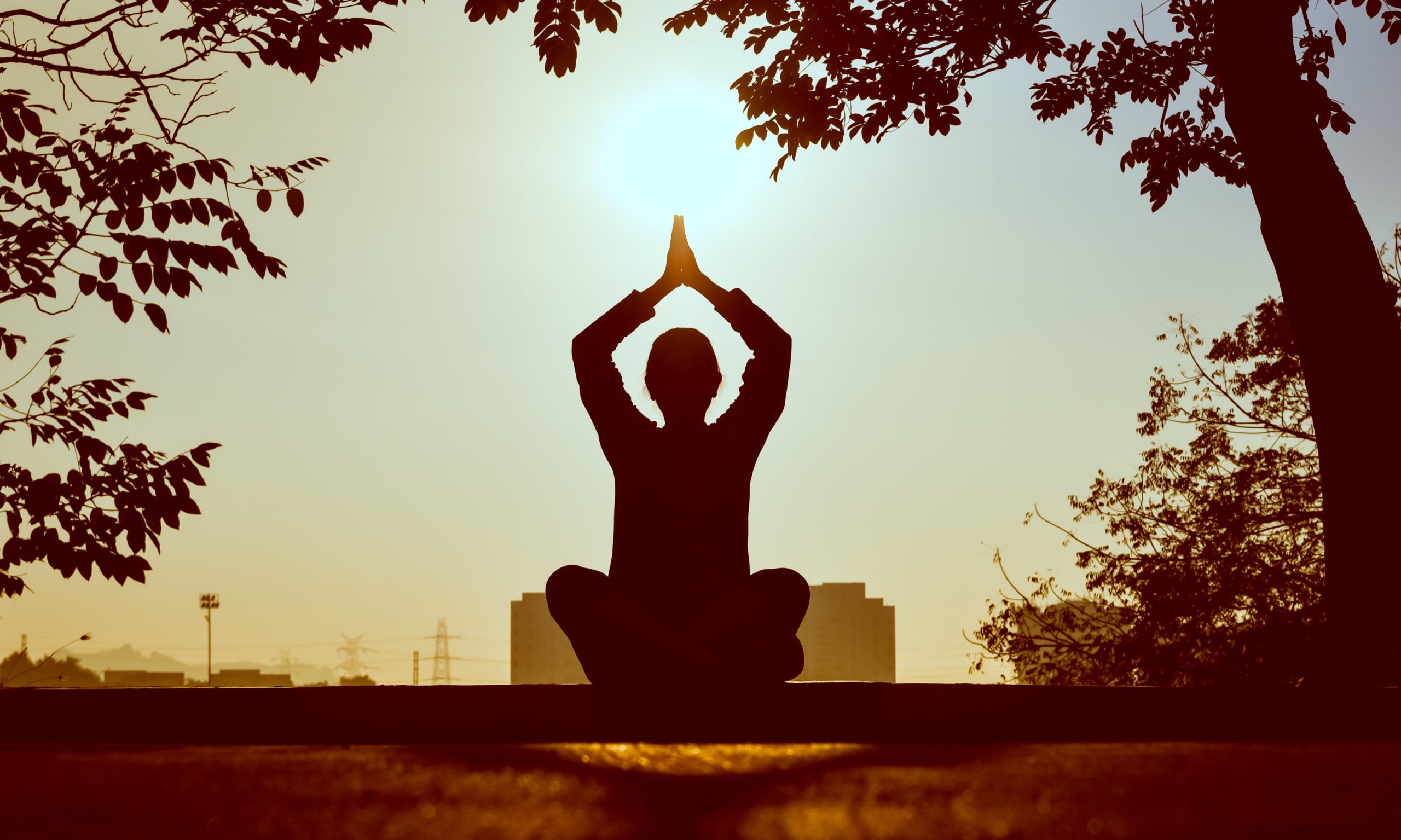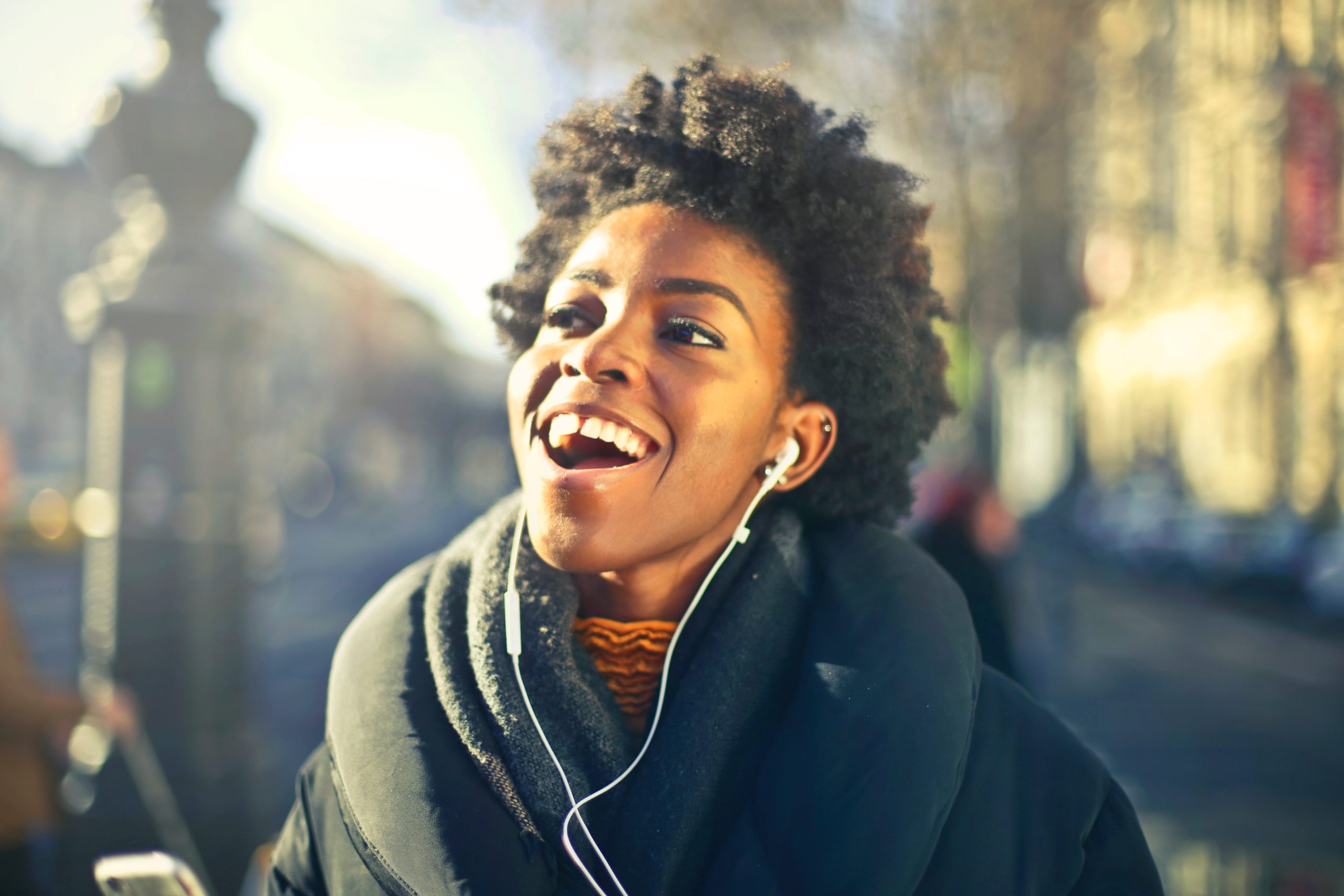Author: Anna Pashkova, MS, RDN, LD, ACSM-EP
What is Meditation?
You’ve likely heard about meditation since it’s popularity has been rising in recent years, but did you know that you can use meditation for anxiety? Before we get into the details, let’s briefly explore what meditation is. Simply put, meditation is a mental practice that creates a mind-body connection by bringing your attention inward to create self-awareness. It allows you to explore your thoughts and feelings without judgement and perhaps understand them better over time. While meditation has been around for a long time (think ancient times!), it is particularly relevant today as we encounter increasing stress and anxiety in our day to day lives. Not only can you use meditation to help anxiety, it can also be used to decrease stress, promote calmness, and improve things such as focus, sleep and irritable bowel syndrome among many other others.
Meditation for Anxiety
According to the National Alliance for Mental Illness and World Health Organization, it is estimated that anxiety affects over 40 million adults in the U.S. and more than 264 million people worldwide. While anxiety comes in many different forms and can also be a normal emotion, the common factor is that it can affect how you process emotions and how you act. This is where meditation comes in.
In recent years, studies have shown that meditation is an effective tool to help anxiety. One meta-analysis that reviewed 47 trials (with over 3,500 participants combined!) suggested that mindfulness meditation programs improved anxiety and depression in participants. Another meta-analysis compared people who meditated versus people who did not: Those who meditated reported better outcomes for symptoms of anxiety compared to those who did not use meditation.
So why is it that using meditation for anxiety seems to work? It’s partially because meditation helps you better regulate your emotions when you’re faced with anxiety-inducing thoughts or situations. If you’re anything like the #NoomNerds, you may also find it really cool that researchers have actually noticed physical changes in parts of the brain in people who practice meditation. These areas of the brain are in charge of regulating sensory, cognitive and emotional processing. Specifically, the changes that occur allow you to improve your self-awareness, empathy, ability to acknowledge and manage your emotions, and be receptive of the present moment without judgement. To top it off, the amygdala, which is the “fight or flight” part of the brain that’s responsible for feelings of anxiety, stress and fear, actually shrinks. These transformations in the brain explain why meditation can help with anxiety.
Now that you know about the evidence behind meditation for anxiety, let’s dig into some of the most common meditation practices.
Types of Meditation
At this point, you may be wondering, “What is the best meditation for anxiety?” Finding the best anxiety meditation can seem intimidating, but it’s ultimately about choosing the kind that resonates with you most. While there are many meditation practices out there, we’ll explore a few of the most common types to get you started.
Guided Meditation
If you’re just starting your meditation journey, a guided meditation for anxiety may be a great place to begin. The word “guided” simply means that the meditation is led by an experienced teacher. This can be done in person, via audio recordings or through video. The benefit of guided meditation is that you really get to learn how to meditate and have someone walk you through it. Over time, you can build on what you learn and transition into unguided meditation or use a combination of the two.
Who it’s best for: Beginners, those who have difficulty focusing on their own, or for people looking to explore new methods of meditation.
Unguided Meditation
Unlike guided meditation, this type is done completely on your own without any external help and is also known as silent meditation. The benefit of unguided meditation is that you can choose what kind of meditation technique you’re using and things like where you practice it, the pace and for how long.
Who it’s best for: People who are looking for meditation that can be fully customized to fit their needs, or more experienced meditators.
Mindfulness Meditation
This type is the most popular and well-researched form of meditation for anxiety in the West. It includes observing your thoughts as they arise without any judgement. Mindfulness meditation requires you to concentrate and bring awareness to your own thoughts, emotions and how your physical body feels. If your mind begins to wander, a helpful tip is to focus on your breath or an object to stay present with your thoughts.
Who it’s best for: Those looking to practice meditation on their own (but can also be practiced with guidance, too!)
Body Scan
Body scan meditations are all about connecting to your own body and noticing how your physical body feels. You begin by placing yourself in a comfortable position, either laying down or sitting, and take notice of any sensations you are experiencing in your body. The benefit of this type of meditation is that it can bring your attention to the present moment, which is helpful when your emotions or anxiety are high. It also creates space for you to become comfortable with both pleasant and unpleasant feelings in your body and simply just notice them without fixing or changing anything. It may be helpful to start this as a guided meditation as it can take practice to begin noticing sensations in your body that you are used to tuning out.
Who it’s best for: Beginners, those looking for a guided meditation, or those wanting to be more in tune with their body.
Movement Meditation
While most meditations are practiced in a state of stillness, movement meditation is just what it sounds like: it is done while you are physically in motion! Common examples of this type are walking, yoga, tai chi, qi gong and other martial arts, but it can also be practiced while you’re doing everyday activities like walking your dog, gardening, cleaning or even playing golf. The purpose of movement meditation is to focus on being present in your body without thinking about the goal of the movement.
Who it’s best for: People who find it difficult to sit still, concentrate better when they are moving, or are looking to increase their physical activity in a mindful way.
Visualization Meditation
Visualization meditation can be practiced in several different ways. In this type of meditation, the focus of your mind can be on an image of an object, a calm or familiar place, someone you love (loving-kindness meditation) or it can even be focused on a goal or outcome. Visualization can be an effective anxiety meditation. Similar to the body scan, it may be helpful to begin this practice as a guided meditation, since it takes an extra level of concentration and imagination.
Who it’s best for: Since it can be practiced many different ways, it can be used by anyone. It can be especially helpful as an anxiety meditation for people who may be feeling anxious about an upcoming event, for example, by allowing them to become more familiar with it ahead of time through visualization.
Focused Meditation
Focused meditation is similar to the concept of movement meditation, but it does not require you to be moving. It’s practiced by placing your attention only on the thing you are doing in the present moment. If it sounds hard, you’re not alone, since many of us have become accustomed to constantly multitasking. Being focused means stopping everything else you are doing and removing distractions (phones, TV, computers, shopping and to-do lists, etc.). The most simple way to practice this is to focus on your breathing. This can help lower your breathing rate and trigger your autonomic nervous system, stopping the “fight or flight” reflex that can often be accompanied by anxiety or stress. You can also practice this type of meditation while you’re eating or perhaps drinking tea by truly tuning into how the food or drink tastes and feels. It’s normal if your mind begins to wander. Notice and acknowledge it, then practice tuning back into your awareness and the present moment.
Who it’s best for: Anyone, but those who find themselves jumping between many thoughts and activities, feeling scattered, or overwhelmed with to-do lists can particularly benefit from this practice.
How to Get Started
Now that we’ve covered different types of meditation, you may be asking, “Okay, what’s next?” If you’re feeling ready to get started with your own meditation to help anxiety, here are three simple steps to build your practice:
1. Choose a type of meditation
Ask yourself a few questions: Would you prefer an unguided or guided meditation? Which type stood out to you the most? If there are a few you are considering, which one feels the most comfortable and do-able for you? If you’re not sure, take some time to experiment with a few different types to find the best meditation for anxiety that will work for you. We’re all unique–what works best for one person may not be the same for another.
2. Set aside time
Once you’ve made a decision on what meditation you’ll be doing, choose a day and time to practice it. Make a commitment to this time in a way that’s effective for you, whether it’s by scheduling it, telling someone for accountability, or recruiting a friend or family member to try it with you. If you can, choose a time where you won’t be feeling rushed so you can give yourself the time you really need. And remember, all you need is just a few minutes.
3. Determine a location
This will depend on what type of meditation you’ve chosen. If it’s a meditation that requires being still, choose a place where you’ll be comfortable and where you can be without distractions. However, if you’re choosing a movement meditation or a focused meditation, your location will largely depend on what you decide to do. Planning the location ahead of time can increase your chances of sticking to it and reduce last-minute decision making.
If you’re looking for a little more guidance on how to bring meditation into your life, check out these 4 Ways to Cultivate a Regular Meditation Practice.
And if you’re thinking you’d like more support to build a healthier mind-body connection, Noom can help!





